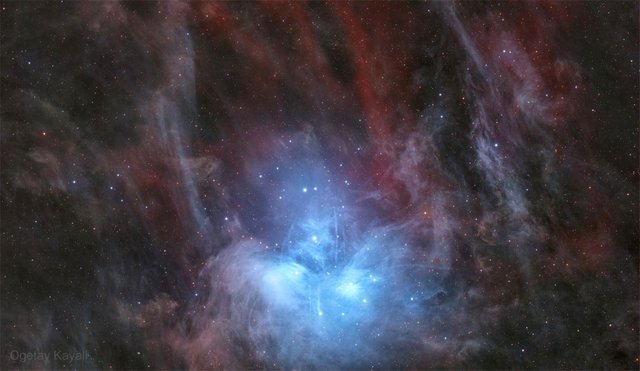🌌 SpacePicture of a Day: The Pleiades in Red and Blue 🪐
If you have looked at the sky and seen a group of stars about the size of the full Moon, that's the Pleiades (M45). Perhaps the most famous star cluster in the sky, its brightest stars can be seen even from the light-polluted cities. But your unaided eye can also see its nebulosity -- the gas and dust surrounding it -- under dark skies. However, telescopes can catch even more. The bright blue stars of the Pleiades, also known as the Seven Sisters, light up their surrounding dust, causing it to appear a diffuse blue that can only be seen under long exposures. But that's not all. The cosmic dust appears to stretch upward like ethereal arms. And the entire structure is surrounded by a reddish glow from the most abundant element in the universe: hydrogen. The featured image is composed of nearly 25 hours of exposure and was captured last year from Starfront Observatory, in Texas, USA Explore Your Universe: Random APOD Generator
HD image: LINK 🛸
Copyright: **
Ogetay Kayali
(Michigan Tech U.)
Text:
Ogetay Kayali
(Michigan Tech U.)
** 🔭
Project Website: LINK 🚀
| Name | Craft |
|---|---|
| Oleg Kononenko | ISS |
| Nikolai Chub | ISS |
| Tracy Caldwell Dyson | ISS |
| Matthew Dominick | ISS |
| Michael Barratt | ISS |
| Jeanette Epps | ISS |
| Alexander Grebenkin | ISS |
| Butch Wilmore | ISS |
| Sunita Williams | ISS |
| Li Guangsu | Tiangong |
| Li Cong | Tiangong |
| Ye Guangfu | Tiangong |

Upvoted! Thank you for supporting witness @jswit.